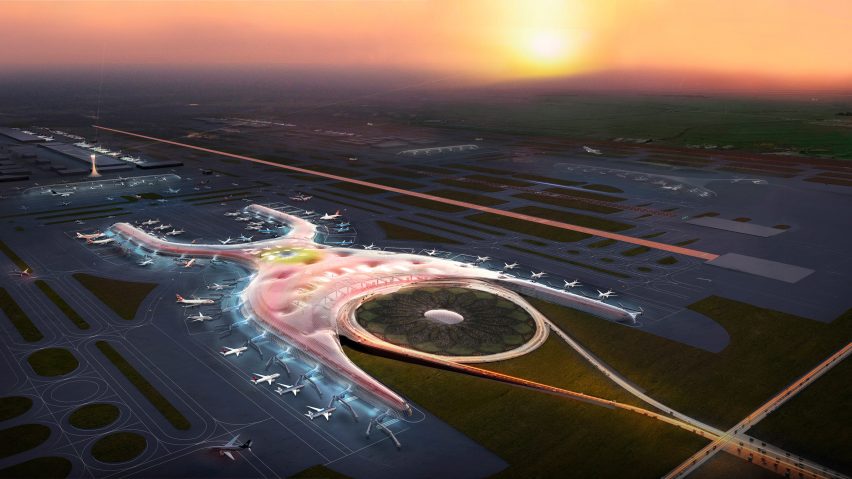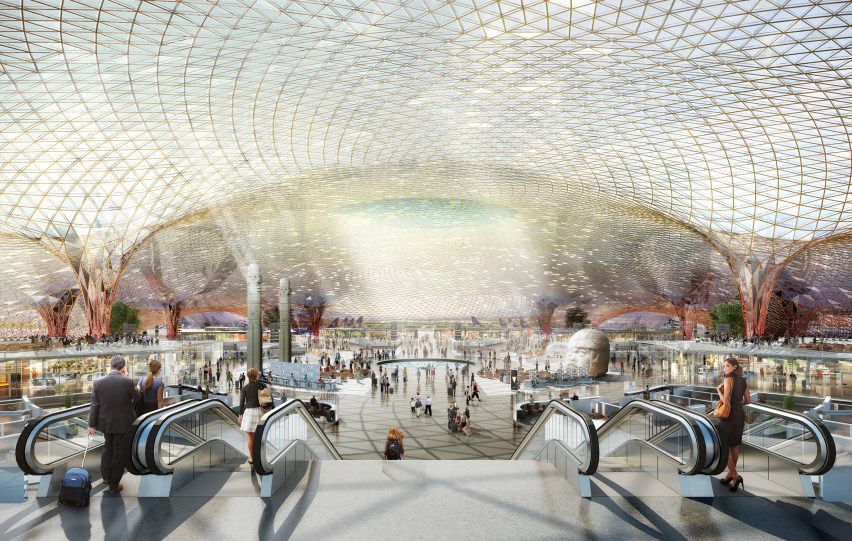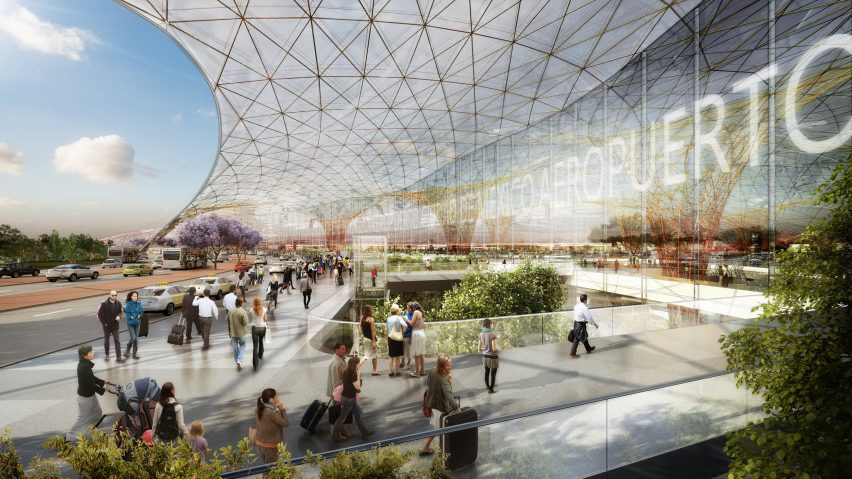
Foster's $13 billion Mexico City airport scrapped after public vote
Foster + Partners' new airport for Mexico City has been cancelled midway through construction, following a public referendum that resulted in a majority vote against the project.
Mexico's president-elect Andrés Manuel López Obrador said that he will respect the outcome of the referendum, which saw 70 per cent of participants vote in favour of scrapping the partially built New Mexico City International Airport.
"The decision taken by the citizens is democratic, rational and efficient," López Obrador announced yesterday, 29 October 2018. "The people decided."
Public vote is binding
Despite the fact the airport has been under construction since 2015, a proposal to cancel the project had formed a key component of López Obrador's presidential campaign earlier this year. He was critical of overspending, corruption and environmental concerns surrounding the construction.

After wining the election with 53 per cent of the vote, López Obrador announced that a binding public vote would talk place in October 2018 to decide the fate of the airport – which British firm Foster + Partners designed with Mexican studio Fernando Romero Enterprise (FR-EE).
Reports stated that only one out of every 90 registered voters took part in the referendum – a total of one million people.
López Obrador concerned about project's cost and environmental impact
The New Mexico City International Airport, or Nuevo Aeropuerto Internacional de la Ciudad de México (NAICM) was spearheaded by outgoing Mexican president Enrique Peña Nieto. The new airport was intended to replace the current Mexico City International Airport – officially Aeropuerto Internacional Benito Juárez – in order to accommodate increasing numbers of passengers.
López Obrador, who will take office in December 2018, was particularly concerned about the expected $13.3 billion (£10.30 billion) cost. Sixty per cent of this was to be funded by the Mexican government, with the remaining 40 per cent made up from bank loans and debt security.
He suggested that a cheaper alternative would be to expand the city's existing 1970s-built airport – which is currently operating at capacity – onto an existing military base nearby. This may come to fruition now that Foster and Romero's scheme project has been nixed.
Another issue with the new scheme is its location northeast of Mexico City in Texcoco, on part of a dry lake bed, which caused many problems construction. It is also close to Lake Nabor Carrillo, which offers refuge to migratory birds that might be killed or deterred by the aeroplanes.
Partially built airport could become "sports and ecological centre"
López Obrador said the outcome of the vote was "a triumph for the environmental movement" and has suggested using the unfinished build to create "a big sports and ecological centre", the Washington Post reported.
Foster and Romero designed the airport in response to a competition, and were selected as winners in 2014. The proposal comprises a lightweight gridshell structure that forms the walls and roof of a 555,000-square-metre terminal, serving six runways.
The lightweight glass and steel roof is shaped to resemble an X as a reference to the letter in the country's name, while its vaulted form draws on traditional Mexican architecture and symbolism.

The first phase – including a terminal to accommodate 68 million passengers per year, and three runways – was expected to open in 2020. The second phase would have provided two more terminals.
Foster's firm has a host of experience with airport design, with completed projects in London, Hong Kong, Beijing, Amman and Kuwait. It also unveiled plans for an additional terminal building for Marseille Provence Airport last year.
Foster + Partners' other projects in Mexico City include a skyscraper currently under construction, while its partner FR-EE is also behind the capital's anvil-shaped Museo Soumaya.
Dezeen has contacted Foster + Partners for comment, but is yet to receive a response.